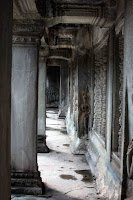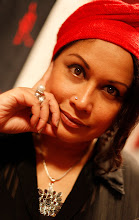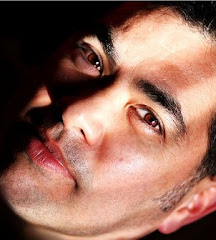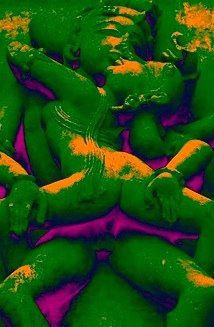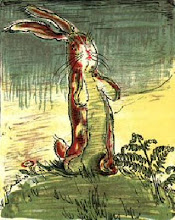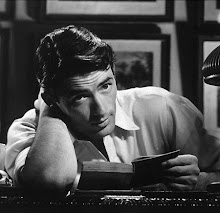 She is dark, like velvety chocolate and terribly faithful, having gone through many good, confusing, over-indulgent and even hair-brained times with us. Alan and I were having a discussion about her, wondering exactly when she had come into our lives. We both remember being in Hong Kong in 2006 catching a train from the airport in the hope of getting off at a stop close enough to our hotel. We failed miserably in the process and how much we laughed at ourselves.
She is dark, like velvety chocolate and terribly faithful, having gone through many good, confusing, over-indulgent and even hair-brained times with us. Alan and I were having a discussion about her, wondering exactly when she had come into our lives. We both remember being in Hong Kong in 2006 catching a train from the airport in the hope of getting off at a stop close enough to our hotel. We failed miserably in the process and how much we laughed at ourselves.I remember the way she hobbled along, behind Alan as we got off the train. Walking in the swift way Alan and I have mastered as we weave in and around people in the underground stations of places like Singapore and Hong Kong. I kept turning around to smile at her keeping up without making a fuss. Yes – the girl has seen many adventures with us - accommodating others without complaint, as being bigger than the rest, she always begins our holidays as our lone suitcase.
It was no different on our trip to Indochina, except on this occasion we did not pack a second case inside her – only the two pull-on cabin bags because the plan was to buy a new friend for her at Ben Thahn Market. I know the holiday happened late last year and I have already made three entries about the trip, but you have yet to read about the shopping.
 As a general rule, we very seldom do any shopping in the air-conditioned shopping centres when we travel. Instead we tend to allow our combined susceptibility for local bazaars, crowded markets and the endless rows of street stalls lead the way. The first sightseeing we do whenever we are in a new place is the walking tour or part there of as recommended by the Lonely Planet Guide for that city. Along the way we include shops and markets that have been recommended, where mostly we check out prices to get a feel of the value of the items that have caught our fancy. And yes, we always weaken even further at the sight of inviting cafés where we will stop to relax, refuel and make use of the restrooms.
As a general rule, we very seldom do any shopping in the air-conditioned shopping centres when we travel. Instead we tend to allow our combined susceptibility for local bazaars, crowded markets and the endless rows of street stalls lead the way. The first sightseeing we do whenever we are in a new place is the walking tour or part there of as recommended by the Lonely Planet Guide for that city. Along the way we include shops and markets that have been recommended, where mostly we check out prices to get a feel of the value of the items that have caught our fancy. And yes, we always weaken even further at the sight of inviting cafés where we will stop to relax, refuel and make use of the restrooms. Most people know how passionate we are about our home. Shambhala is a reflection of who we are, where we have been; of our beliefs and our obsessions. People always think that it is mainly my love for interior decorating that has filled our home with the colours and textures, the smells and ambiance. I might be the driving force but as I began writing this entry, I came to realise that Alan has made a significant contribution of his own. And I don’t just mean in just the numerous handyman things he has done around the house. You see, Alan like me thoroughly enjoys holiday shopping.
Most people know how passionate we are about our home. Shambhala is a reflection of who we are, where we have been; of our beliefs and our obsessions. People always think that it is mainly my love for interior decorating that has filled our home with the colours and textures, the smells and ambiance. I might be the driving force but as I began writing this entry, I came to realise that Alan has made a significant contribution of his own. And I don’t just mean in just the numerous handyman things he has done around the house. You see, Alan like me thoroughly enjoys holiday shopping.This of course is altogether different from the years of unnecessary shopping that I indulged in before. Back then it was my searching for my true path and unskillful thinking that led me to believe I could fill all the empty space
 inside me with the things I constantly had to go out and buy. Those of you who have been with me through my blogging journey know how India cured me of that acquisitive misery. These days I really only buy things we actually need to live on or to make a living with. I believe I only drop my guard when lush plants beg me to take them home. *smile*
inside me with the things I constantly had to go out and buy. Those of you who have been with me through my blogging journey know how India cured me of that acquisitive misery. These days I really only buy things we actually need to live on or to make a living with. I believe I only drop my guard when lush plants beg me to take them home. *smile*So when we go on holidays … we shop big-time. It becomes a festival of buying clothes, shoes and beautiful pieces for our home. Alan is the best partner I could ever wish to be on holiday with. We generally have similar obsessions and so we have tremendous fun together. History, people, food and coffee are major interests. We love walking - and walking is the best way to meet the locals. Locals generally love to chat - and chatting is the best way to find out the top places to eat and do an unadulterated amount of
 shopping at.
shopping at.In Saigon, Alan lost his heart to the variety of lamps they had on offer. I had to literally drag him out of the little shops because he was relentless. In total he managed to convince me, that we would find room in our home for eight more lamps. Everyone knows I am the reining queen of soft-lighting in our neighbourhood, we already had a houseful of lamps. So initially I only agreed to buying three more. But de Souza Saab was adamant that I would severely regret it if I did not agree with him that our home required the other five. They are gorgeous, don’t get me wrong, the man has taste and this is not the first time we have bought lamps while on holiday.


 Like me, Alan also likes object d'art.
Like me, Alan also likes object d'art.So it came as no surprise to me that while in the Buddha country of Siem Reap, Cambodia,
 Alan grew attached to a very heavy and beautifully sculptured silver statue of Siddhartha Gautama Buddha. It was tucked away in a very humid claustrophobic maze of shops that we only happened upon by accident. Before we left for Indochina I had made a wish-list of items. One of the items on that list was 'statue of the Buddha'. We saw literally thousands of statues in Vietnam and Cambodia but I soon began to lose interest in looking because none of them really appealed to me - until this silver one appeared.
Alan grew attached to a very heavy and beautifully sculptured silver statue of Siddhartha Gautama Buddha. It was tucked away in a very humid claustrophobic maze of shops that we only happened upon by accident. Before we left for Indochina I had made a wish-list of items. One of the items on that list was 'statue of the Buddha'. We saw literally thousands of statues in Vietnam and Cambodia but I soon began to lose interest in looking because none of them really appealed to me - until this silver one appeared. Now the problem was … being made of silver on bronze, he weighed about eight kilograms and was quite expensive. I am very paranoid and do not like the worry of being overloaded with luggage – also I knew Alan was going to go back to Saigon and want to buy the other five lamps and the statues of the iconic Three Ladies of Vietnam that he had seen in a shop outside Ben Thahn Market. I immediately made a decision not to buy the silver Buddha. Touching his beautiful face, I gave him my love and knew I would think about him for a long time. Then I walked away. Not my Alan – he obviously wanted the statue. Walking back to the tourist area of Siem Reap and sweating profusely, he was wiping his face and saying to me how beautiful he thought the statue was and that we had not seen anything quite like it. I remember telling him that was
Now the problem was … being made of silver on bronze, he weighed about eight kilograms and was quite expensive. I am very paranoid and do not like the worry of being overloaded with luggage – also I knew Alan was going to go back to Saigon and want to buy the other five lamps and the statues of the iconic Three Ladies of Vietnam that he had seen in a shop outside Ben Thahn Market. I immediately made a decision not to buy the silver Buddha. Touching his beautiful face, I gave him my love and knew I would think about him for a long time. Then I walked away. Not my Alan – he obviously wanted the statue. Walking back to the tourist area of Siem Reap and sweating profusely, he was wiping his face and saying to me how beautiful he thought the statue was and that we had not seen anything quite like it. I remember telling him that was  because it had been handmade by an artist and was not cast from a mould or constructed of poor quality materials. “That is why we should buy it!” he insisted.
because it had been handmade by an artist and was not cast from a mould or constructed of poor quality materials. “That is why we should buy it!” he insisted.  Our last afternoon in Siem Reap arrived and we decided we wanted to enjoy another meal and then heavenly fruit drinks at the two cafes we had come to like very much along the main eating stretch of that dusty and very friendly town. After two drinks each and lazing on the bed and pillows for longer than we should have, Alan said he wanted to find that shop with the silver Buddha. “To say goodbye?” I teased him knowing full well he wanted to have one final look only to confirm his decision to purchase it.
Our last afternoon in Siem Reap arrived and we decided we wanted to enjoy another meal and then heavenly fruit drinks at the two cafes we had come to like very much along the main eating stretch of that dusty and very friendly town. After two drinks each and lazing on the bed and pillows for longer than we should have, Alan said he wanted to find that shop with the silver Buddha. “To say goodbye?” I teased him knowing full well he wanted to have one final look only to confirm his decision to purchase it.It took us thirty five minutes of wandering, making wrong turns, copious sweating, a need for me to find a toilet which of course does not seem to exist in such areas in Asia and then lagging behind and grumbling under my breath before we finally found the shop with the silver Buddha. I could see how delighted Alan was and could not begrudge him the indulgence. Besides, the Buddha really is an exquisite piece. We just had to find a way to take him home with us.
And so together with the five extra lamps which we did end up buying, the Three Ladies of Vietnam in a deep shade of jade, a large red and black lacquer tray with mother of pearl in-lay and all the clothes and shoes we had fought through crowds and after serious bargaining purchased - we set out on the final day in Saigon to find two new friends to keep our terribly faithful brown suitcase company. Alan had a wonderful time buying those as well.
Next trip Paris and London.


 Would you like to take a moment to light some incense? Go on ... I really think it will go down well with this entry.
Would you like to take a moment to light some incense? Go on ... I really think it will go down well with this entry. 
















 The journey to Kampung Phluk is indeed a very pretty one. Again along the way, on both sides of the road for the first fifteen minutes of our tuk-tuk ride, we were sandwiched between waterways. Unfurling their pink tipped petals as they swayed their heads gently in the breeze greeting the sunshine and the traffic – lotus blooms at different intervals shared their sodden dwellings with water lilies and little children. The children beautifully brown from the sun appeared carefree and happy as they squealed in delight catching tadpoles and dragonflies or just splashing around in the water. Out of the past, I heard my grandmother's voice calling, "Juuude, you are going to get hookworms, stop playing in that pokaria (dirty) water! "
The journey to Kampung Phluk is indeed a very pretty one. Again along the way, on both sides of the road for the first fifteen minutes of our tuk-tuk ride, we were sandwiched between waterways. Unfurling their pink tipped petals as they swayed their heads gently in the breeze greeting the sunshine and the traffic – lotus blooms at different intervals shared their sodden dwellings with water lilies and little children. The children beautifully brown from the sun appeared carefree and happy as they squealed in delight catching tadpoles and dragonflies or just splashing around in the water. Out of the past, I heard my grandmother's voice calling, "Juuude, you are going to get hookworms, stop playing in that pokaria (dirty) water! "























